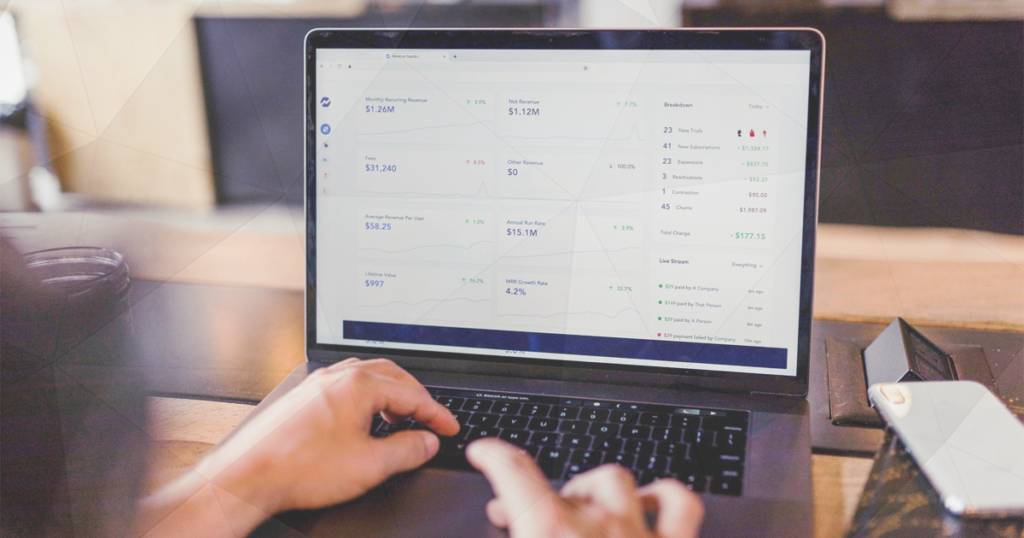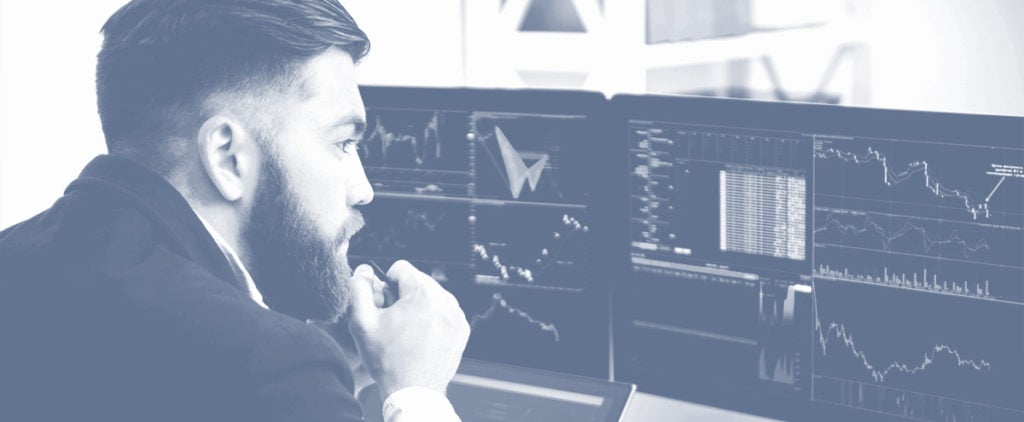Reality Check: Why Most People Don’t Become Day Trading Millionaires

Day trading is one of those topics that polarises many people in the trading community.
For some, day trading promises quick profits and the road to financial freedom.
For others, those who didn’t experience any trading success, day trading is the road to financial disaster. They believe short-term price movements can’t be predicted consistently and that day trading resembles gambling.
Just like with anything else, the truth lies somewhere in between. For every successful day trader, there are four who blow their account. And among all the successful traders, only a minority make the big money.
So, what does it take to become a millionaire day trader? What’s the path to success?
For a start, it’s to stop losing money. Here’s why most people don’t become day trading millionaires, and what you can do to join the elite club of highly-profitable traders.
Why is Day Trading Difficult for Most People?
Day traders who didn’t make it to become successful and who blew their accounts often claim that it’s impossible to predict the markets. According to this group of traders, short-term price movements, the movements that day traders are interested in, is market noise that can’t be traded. For them, day trading is gambling, and the chance to succeed is much like that of betting black in roulette.
And they’re in some sense correct.
The probability of any single trade is around 50%. It’s like tossing a coin. Ask any professional day trader who trades with millions of dollars, and you’ll likely get a response that they don’t know whether their next trade will be a winner or a loser.
But, in the long run, and over a sample of dozens of trades, professional traders know that they’ll make good money in the markets. It’s a probability game, and you need to have an edge to take advantage of the markets.
There we have the first rule you need to succeed: Having a trading edge. The majority of day traders, especially those who have just getting started trading, don’t have an edge. It takes months to develop a trading strategy that works for you.
The next point you’ll often hear from traders who have failed is that’s impossible to predict what the market will do in the next second, hour, or day.
Again, they’re right.
There are hundreds of factors that influence the price, and anticipating all of them is impossible.
But they got one thing wrong
The job of a trader isn’t to forecast what the market will do. It’s to assess the probability of an upcoming market move, to calculate the risk of taking the trade, and to make as much money as possible if the market does go in their direction.
Most of the time, trading is just about successfully managing risks and making the most money with the least amount of risk. You don’t have to predict with certainty where the market is going in the next minute, but whether you want to take a calculated risk to trade your idea.
- Learn more, take our free course: Mastering Trading Risk
Unrealistic expectations
The most common mistake that disappoints many new day traders are unrealistic expectations. Don’t expect to turn a million with a starting capital of a few hundred dollars. The best day traders around don’t even focus on making money.
Don’t get me wrong, the goal of every trader is to make a profit at the end of the day. But the best traders focus on something else: Their trading process.
They focus on making the right moves, closing their trades at the right levels and following every inch of their trading strategy. It happens that they make money along the way. They don’t measure their success by whether they’ve made a profit or not, but whether they’ve followed their trading plan.
Regarding trading performance, even hedge funds with hundreds of professional traders have an average return slightly above the return of the S&P 500. Warren Buffett, one of the best investors of all time, returned an annual average return of around 20% since 1965.
Nevertheless, day traders have a huge advantage over large investors as they can apply short-term breakout, momentum, and trend-following strategies that simply don’t work if traded with billions of dollars.
That’s why highly successful day traders are able to achieve amazing annual returns, but it takes a healthy mix of experience, discipline, and patience to get to that level of performance.
Lack of experience
Another reason why many traders find day trading to be too difficult is because of their lack of trading experience. It takes time until you master a skill, and trading is no different.
When a new trader starts trading, they usually has no idea what to do with a chart. They buy when the price is rising on the 1-minute chart, and sell when the price is falling. Or, they might find some simple crossover strategies that say to buy when the red line crosses the blue line, and to sell when the blue line crosses the red line.
Needless to say, the majority of new traders blow their account in record time. That’s when they return to their drawing board and start to do the necessary homework to become a successful trader.
For most traders, it will take months, or even years, until they find themselves to be consistently profitable. Successful trading takes time, so make sure to invest that time if you want to succeed in this game.
- Learn more, take our premium course: Trading for Beginners
Emotional control
You have to learn how to control your emotions to become a successful day trader.
Remember the example with the new traders who buy when the price is rising and sell when the price is falling? Guess what, even with a 50% chance to be right, they’ll lose money.
Inexperienced traders tend to cut their winners short and let their losing positions run. They want to lock in those profits as early as possible as they’re afraid to give back their winnings.
On the other side, they let their losses grow as they hope the market will return in their favour. This makes their average losing positions larger than their winning positions.
Trading with real money inevitably triggers an emotional response. Traders are humans who feel fear of losing money, and greed when a trade goes in their direction. The only problem is, those emotions interfere with our trading decisions and often lead to costly trading mistakes.
The best traders don’t feel fear or greed when trading. They don’t even hope to make money on their next trade. They simply execute their trading plan, take a calculated risk on any trade, and let the market decide whether they’re right or wrong.
Fear of Success and What to do About It
A major obstacle that prevents day traders from becoming very profitable is fear of success. Even if you do everything right, follow your trading plan, and wait patiently for your next trade to emerge. The chances are that fear of success will prevent you from hitting a home run.
Fear of success refers to closing your winning trades too early. It’s sometimes hard to understand why traders close a winning trade even if there is no obvious reason to do so. A trader might think that the current profits are more than enough and that risking a trend-reversal is simply not worth it. However, in the long run, this practice will significantly undermine your trading performance.
I know of beginners traders with little education catch an excellent trade by taking a very small risk, and close their trade after it reached a reward-to-risk of 5:1 or more. For example, if they had a trade that is 100 pips in profit and took a risk of only 10 pips, they would close the trade as the profits would be simply too large to ignore or to risk a possible reversal.
Is there anything more frustrating than having a winning trade vanish in front of your eyes because you didn’t take profits?
Well, there is.
That’s closing a winning trade too early by not following your plan.
What Can You do to Become a Better Day Trader?
I have developed a few rules that have helped students tremendously in their trading. So, here are a few tips that should help you to become a better day trader.
Trade the trends
Trends offer the largest profit opportunities. Markets like to trend, and when they do, it’s often a strong directional move that’s easy to identify with the bare eye.
Consider a simple trend-following strategy that aims to identify trends before they actually happen using trendlines, Fibonacci retracements, certain chart patterns, and horizontal support and resistance levels. Include fundamental analysis in your trading and stay up-to-date with the most important market-moving events in the world.
Don’t undermine your success
As said earlier, don’t fear success. Stay on a trend as long as it lasts and until there are obvious technical reasons to close a trade. By the time you close your trade, the profits should be nice and fat and a multiple of your initial risk.
Always preserve your capital
If there was only one tip I would give to new traders, it would be to protect your trading capital.
To make money in the markets, you first have to preserve your initial capital. The goal of a trader is to
- Avoid losses
- Protect your capital
- Make money
You can’t become profitable if you don’t avoid losses and don’t protect your account.
A smart way to protect your account is to move your stop-loss to breakeven as long as your trade moves in your favour. Also, make sure to protect part of your profits as the trend progresses, but always make sure to have enough room to withstand market noise and short-term price fluctuations.
You want to set your stop-loss at a price-level that invalidates your current trade idea. If you’re long, place your stop-loss somewhere where the market bias turns bearish, such as below a major trendline. If you’re short, place your stop-loss at a level where the market bias turns from bearish to bullish. Because, once the bias shifts, your trend is over and it’s time to take profits.
Risk management is key
I have yet to see a successful day trader who doesn’t religiously follow a strict risk management plan. In trading, risk management is key. The only thing we can control is our risk. Whether the market goes up or down and whether our trade idea will be profitable or not is out of our control. Traders are first and foremost risk managers.
Bear in mind that managing risk is not only about determining the percentage of your account you want to risk per trade. It’s also about making the right trades, being patient for a setup to emerge, moving your stop-loss to protect your profits, and knowing when to exit a losing trade.
Sit on your hands
Successful traders need to know when it’s time to sit on their hands. Traders don’t make money while trading, but while waiting for a good trade to go in their favour. If there is no tradeable setup in the markets, I don’t trade. Be patient when taking your trades, because impulsive behavior will most probably lead to disaster in the long-term.
Keep learning
Even after becoming consistently profitable, nobody has ever “cracked the markets”. There is always something new to learn and fields to improve in. Keep reading about various trading techniques and try to find ways to improve your exit and entry points.
At My Trading Skills, we’ve created a comprehensive Trading for Beginners course that will teach you everything you need to know to kick-start a successful trading career. However, your daily progress after you’ve finished with the course relies solely on your ability to keep learning, day by day.
Keep it simple
My final piece of advice is to keep your trading simple and smart. If you want to outperform, you can’t rely on exotic indicators that are used only by a small group of traders.
Instead, focus on simple and wide-spread technical tools such as trendlines, Fibonacci lines, horizontal support and resistance levels, channels, popular moving averages like the 100-day and 200-day MAs, and popular indicators like the RSI, ATR, and MACD. Try to build a trading strategy around those tools, and you should soon see your performance improving.
- Take our free course: Technical Analysis Explained
- Take our free course: Trends, Support & Resistance
- Take our free course: Japanese Candlesticks Decoded
- Take our free course: Reversal Price Patterns
- Take our free course: Continuation Price Patterns
- Take our premium course: Trading for Beginners
Final Words
Day trading is fun, and so it should be.
That being said, day trading can be tough at times, especially if you’re just getting started with trading and enter the arena with unrealistic expectations. Trading is a journey, a marathon; not a sprint or get-rich-quick scheme.
Hopefully, this article helped you to get a more realistic view of what it takes to become a successful trader and why so many traders keep failing. Although it’s fairly unlikely to turn $100 into a million, you can expect to outperform many large institutional investors with your ability to utilise any trading strategy you want, trade any time horizon you want, and follow any risk management rule you find appropriate.





